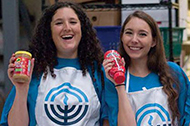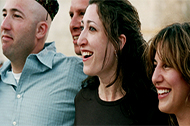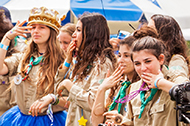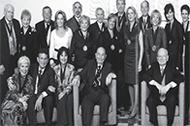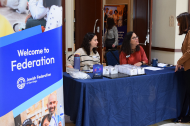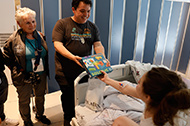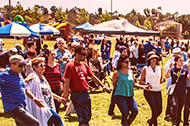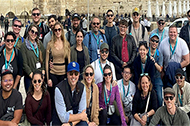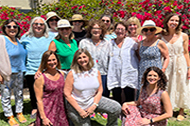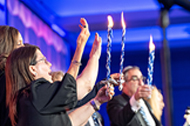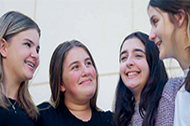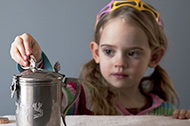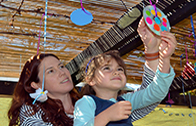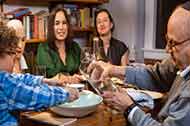April 2, 2024: David Bark
04/02/2024


Today was another full day of listening and learning, as well as sharing many emotional moments with our Sha’ar HaNegev family.
The more time we spend together, the more we realize how much we have in common and how much we need each other. It is so clear to everyone on this Mission that only by working together do we come out of this darkness in a better, more peaceful place.
Our day started at the Shamir Medical Center where we learned about the incredible work being done in hyperbaric medicine and research. Most of us are familiar with hyperbaric chambers and their use in the diving world. Here at Shamir, they have taken this technology to the next level: treating a variety of biological and brain injuries. We saw a severely wounded soldier who would otherwise have died if not for these revolutionary treatments. Also, Shamir’s research and treatment around PTSD is world renowned! Shamir is leading the way in helping patients with a variety of brain injuries that have previously been ignored and left untreated, leading to lifelong difficulties for many people.

Our next stop was Schneider Medical Center. This is the facility where the hostages were brought immediately after their release from Gaza. They were treated (and many continue to receive treatment) for both their physical and emotional wounds. We saw photos and videos of many happy reunions of the hostages with their families, which brought tears of joy to us all. At the very same moment, we have tears of sadness looking at the reminders of the many more hostages that are still in Gaza and MUST come home! With these tears of joy and sadness flowing together, we made our way to deliver presents and smiles to some of the young patients in the hospital. This is what Israel looks like today.
That afternoon we walked around hostage square in Tel Aviv. Everywhere you look there are various forms of art, paintings, drawings, empty chairs and photos (of hostages), with the same theme: Bring them home now! It’s so difficult to describe the feeling because of the many emotions surfacing all at the same time. Sadness, loneliness, helplessness, anger… and then we take all those feelings on the bus and head to visit Shfayim, the venue where the residents of Kfar Aza are staying “temporarily.”

We met with Vered Libstein (whose husband Ofir was murdered on October 7) and listened to her story, some of us for the first time. Regardless, we need to hear Vered’s story many more times and tell her story even more. The world must never forget, and it is our responsibility to ensure that happens. It is one of many reasons we are here. We will return to our home in San Diego with dozens of stories that need to be told.
The day ended with a long moment of joy and hope for the future. There is a bar/pub at Shfayim that was remodeled to look like one that is in Kfar Aza. After dinner, the bar was opened for our group and quite a few Kfar Aza residents, including Vered. We spent the next hour joking, smiling, laughing and telling stories of how good life can be and what we see for the future. Not only am I optimistic and hopeful for the future for our San Diego and Sha’ar HaNegev family, I am certain we will come out of this darkness, brighter and with an even greater zest for life. It will not happen soon, nor will it be easy. But it will happen because we will make it happen.
